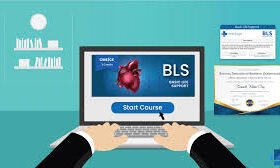Is building an e-learning site like Udemy your next million-dollar idea? Then, it sure is a profitable venture to scale your business! The online learning landscape is fast-evolving, fueled by the growth of MOOCs like Udemy and Coursera.
The global e-learning industry is expected to grow at 14% CAGR from 2023 to 2032. So, it is the right time to take a leaf from Udemy’s success! Now, the next real question is, how do you start an e-learning website like Udemy?
Without further ado, let’s see how to get started with this strategic read!
Why Create a Website like Udemy?
First let’s look at some compelling reasons to reiterate Udemy’s success story and ease your doubts!
● Increased Demand
The self-learning trend is raging in the education, training, the corporate sector, etc.
● Profitable
An e-learning website offers diverse revenue streams like courses, certifications, subscriptions, etc., to maximize your profits.
● Flexibility
Online learning creates remote opportunities for learners and tutors to learn and earn at their own convenience.
● Personalized Education
E-learning websites provide you with customized content, goal-setting, flexible pacing, etc.
Complete Step-by-Step Guide on How to Start an E-learning Website like Udemy
If you have planned to create a website like Udemy, here’s a detailed roadmap to get you started:
Step 1: Define Your Niche & Perform Market Analysis
Before building your e-learning website, zero in on a profitable niche. Why is your niche so crucial? It is like laying the first stone for your business and determining the long-term success of your platform!
You can create a multi-domain website like Udemy or a platform specifically to learn coding like Codecademy. If you’re a linguist, you can even create a language-learning platform like Duolingo.
Consider these factors to determine the right niche:
● Expertise and Knowledge
● Passion and Skills
● Learner demographics like gender, age, education, interests, etc.
● Competitor Analysis
● Profitability
Most importantly, your website needs a unique business proposition to steal the limelight!
Step 2: Choose the Right Monetization Strategies
Next, you need a strategic business model that pumps in revenue for your endeavor!
Here are the popular monetization strategies for your e-learning business:
● Pay-per-course
In this course model, the platform monetizes from paid courses purchased by learners. Further, the platform takes a fixed commission percentage and credits the remaining to the instructors. E.g., Udemy
● Paid Certificates
Here, the platform provides free courses; however, charges for the course completion certificate. Usually, this involves collaborations with accredited colleges and universities.
● Freemium Model
Users access the basic features free of cost; however, pay for premium upgrades. This model could be ad-based or donation-based. E.g., Khan Academy(donation-based)
● Subscriptions
With this model, the platform can charge a monthly or yearly fee to access the platform resources. This provides a predictable income for running the platform. E.g., Skillshare
Step 3: Decide the Essential Features
An enriching feature set and user-friendly interface can provide a stellar platform experience! Start with essential features to make your platform functional. Next, you can decide on additional features that offer an edge over your rivals.
Given below are the desirable features for running your e-learning platform:
● Registration
● Extensive Search & Filters
● Commission Management
● Payment Processor
● Dedicated Admin Panel
● Learning Management System
● Course Creation & Access
● Tutor Dashboard
Step 4: Determine Your Tech Stack
You have established the basic framework for your website, but you need a robust tech stack to scale your idea! What tools and APIs would support your platform development?
Listed below are the technologies to build a successful e-learning platform:
● BackEnd: Angular JS, HTML5, CSS3, Javascript
● FrontEnd: Node.js, PHP, Ruby, Python, MongoDB, Redis Cache
Step 5: Choose an Appropriate Development Approach
Now, it’s time to get your hands on the actual development process and implement your plans!
The two main developmental approaches for building your e-learning site are:
Building from scratch
Creating a custom-built platform demands a higher cost and a lengthier timeframe. Developing an e-learning website costs around $50,000 approx. and requires a dedicated development team.
Let’s move on to a better alternative!
Leveraging clone scripts
Ready-made Udemy clone scripts offer all the essential features and functionalities to launch your e-learning website quickly! From course creation to in-depth analytics, they offer it all with a powerful UX! Above all, they are cost-effective and offer 100% ownership over your product.
Step 6: Attract Instructors and Students to the Platform
While you might have the most robust design and best-in-class tech stack, high-quality instructors essentially drive an e-learning platform!
If you’re building a marketplace like Udemy, you can’t launch your platform without niche-specific instructors or content! Attract the best talent by offering competitive incentives, commissions, and referrals.
Step 7: Marketing Your E-Learning Website
The final step is to promote your e-learning website across relevant marketing channels.
Here are top marketing strategies to spread the word about your e-learning websites:
● Create compelling niche-related blogs to drive more traffic.
● Send emails and newsletters promoting your website with attractive discounts and referrals.
● Use social media to engage and interact with the audience.
● Optimize your website with SEO strategies to increase your visibility.
Final Thoughts
The online learning space is rapidly evolving, further fueled by modern technologies like artificial intelligence, AR and VR. With the right niche, monetization strategies, and development approach, you can build your dream e-learning platform! Leverage clone scripts to build an e-learning website with ease!












Leave a Reply